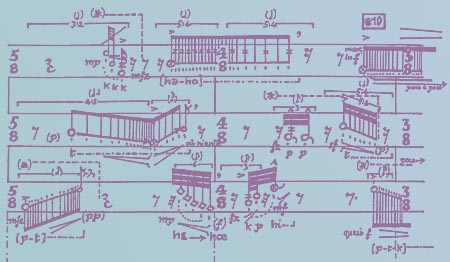On my way to work this morning, I was listening to an interview with the band Blitzen Trapper on my iPod. They’ve got a beautiful song called ‘Furr’; the sound echoes 1970s folk rock- and roots influences like English folk, country and bluegrass. Anyway, Eric Early, the main songwriter, got my attention with his answer to this question: INTERVIEWER: Obviously ‘American music’ means different things to different people. What does it mean to you?
On my way to work this morning, I was listening to an interview with the band Blitzen Trapper on my iPod. They've got a beautiful song called ‘Furr'; the sound echoes 1970s folk rock- and roots influences like English folk, country and bluegrass. Anyway, Eric Early, the main songwriter, got my attention with his answer to this question:
INTERVIEWER: Obviously ‘American music' means different things to different people. What does it mean to you?
EARLY: I don't know, now I think it sort just means the music that comes out of the environment that we've created. And also I think it comes out of the schism between the environment that we've created, and the environment that was there initially.
One of the things that makes popular music so interesting is the way that it constantly builds on the past to reinvent itself. Ray Charles famously took gospel music and wedded it to rhythm and blues. The pumping cumbia music of Mexican norteña bands would never have happened if not for Czech and German settlers on the Texas border. And today, a group of producers in Tijuana have combined that same norteña with electronica to create the "Nortec" sound.
Architecture, on the other hand, isn't so good at hybrids, like rock or folk or hip hop. It's more like classical music. The advent of modernism in classical music early in the 20th century created a schism. Dissonance and arrhythmia have dominated the landscape of modern classical music ever since. Composers who dare to make music that makes reference to the past are usually derided. And so goes architecture.
Our cities and towns are suffering from a schism between the native styles of architecture that made our country unique and a modern style that broke that connection with the "old, weird America", as Greil Marcus put it. The clean lines of modernism have a tendency to erase our past rather than build upon it, taking our sense of history and place with it.

Modern classical music, with a resemblance to modern architecture.
While I'm not one to reject the modernist style out of hand in architecture (it is responsible for some truly beautiful buildings), it does seem clear that it is not a ‘popular' form. The audience for modern classical music is small and elite; the same can be said for those who appreciate the rigor of modern architecture, despite the fact that it professes to be a universal, democratic aesthetic.
Meanwhile, many of the attempts to create new versions of American vernacular styles have fallen flat. Particularly in California where the history doesn't run as deep, new buildings engaging with traditional styles are vicitims of too much cost-cutting and cheap imitation in place of true innovation.
So why not? Can we mend the schism between the environment we've created and the environment that was there initially? Where are the architects with the skill to build upon the styles of the past, and reinvent them with panache? I say, bring back the old, weird America, but make it new again.

Planetizen Federal Action Tracker
A weekly monitor of how Trump’s orders and actions are impacting planners and planning in America.

Chicago’s Ghost Rails
Just beneath the surface of the modern city lie the remnants of its expansive early 20th-century streetcar system.

Amtrak Cutting Jobs, Funding to High-Speed Rail
The agency plans to cut 10 percent of its workforce and has confirmed it will not fund new high-speed rail projects.

Ohio Forces Data Centers to Prepay for Power
Utilities are calling on states to hold data center operators responsible for new energy demands to prevent leaving consumers on the hook for their bills.

MARTA CEO Steps Down Amid Citizenship Concerns
MARTA’s board announced Thursday that its chief, who is from Canada, is resigning due to questions about his immigration status.

Silicon Valley ‘Bike Superhighway’ Awarded $14M State Grant
A Caltrans grant brings the 10-mile Central Bikeway project connecting Santa Clara and East San Jose closer to fruition.
Urban Design for Planners 1: Software Tools
This six-course series explores essential urban design concepts using open source software and equips planners with the tools they need to participate fully in the urban design process.
Planning for Universal Design
Learn the tools for implementing Universal Design in planning regulations.
Caltrans
City of Fort Worth
Mpact (founded as Rail~Volution)
City of Camden Redevelopment Agency
City of Astoria
City of Portland
City of Laramie






























